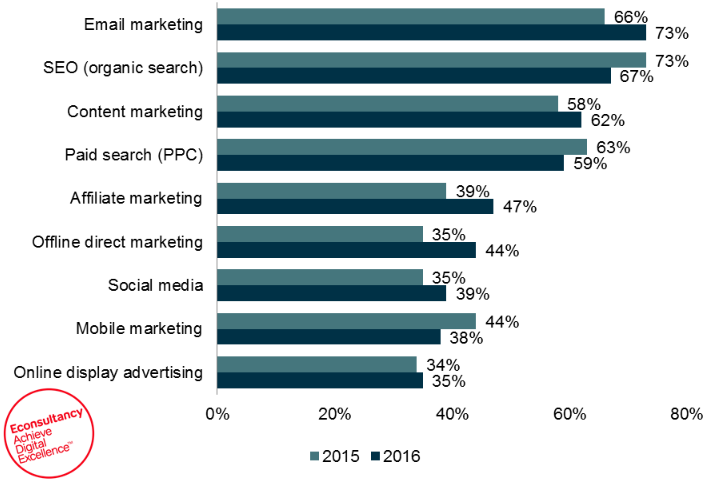“It’s not in the budget” is a common phrase heard in the workplace.
Your organisation is cutting costs. Or they just don’t have the funds.
Communications is always the first division to be hit.
The greatest challenge for government communicators is reaching a wide audience on a limited budget.
You want citizens to notice you. You want people to trust you. You want your audience so engaged they not only read your content but are also prompted to act.
However, you have staff shortages, resource deficiencies and simply don’t have the budget to develop content.
With limited resources, how can you make time for everything?
Content marketing is seen as internal resource-heavy rather than outputted cost heavy.
How do manage your resources in a way which creates effective marketing campaigns?
There’s a simple solution and it’s so simple you won’t believe me.
Is social media an empty investment?
In a recent survey, we asked you your favourite marketing topics. The broad subject of content marketing returned as your most favourite topic. In equal second were government case studies, strategy and social media. (Note: social media is not referring to advertising as this was the least liked topic.)
Of these four topics, social media is the only discrete tactic here. The rest are general subjects. Social media ranked significantly ahead of the next tactic. Why does social media rank so high?
In 2009, we can see the Google search term ‘social media marketing’ exploded in popularity.

By 2011, social media marketing was all the rage. And it still is, especially in government. Social media marketing has developed a reputation for its massive reach.
The potential of organic social media marketing, if done correctly, is getting the eyes and ears of almost every home in Australia. If done correctly…
If not, the return on investment of organic social media marketing is low. Exceedingly low.
I’m not saying it doesn’t work. It can if you know what you’re doing. James Kliemt, for example, grew the Queensland Police Service Facebook page to a quarter of a million ‘likes’ in a state of 4.5 million. The QLD Police catch criminals with Facebook. They know what they’re doing.
And if your biggest challenge is raising awareness on a limited budget, then we have a problem.
The highest marketing ROI of any medium
In the Email Marketing Industry Census 2016, Adestra and Econsultancy found email has the highest return on investment out of all marketing channels.
73% of marketers self-report email marketing offers ‘excellent’ to ‘good’ ROI. This ranks ahead of SEO, content marketing, PPC and almost DOUBLE the ROI of social media.

Later in this report, they state the average (mean) proportion of total sales private industry client-side marketers can attribute to their email marketing channel is 23%.
The exact ROI of email marketing in 2015, as reported by the UK Direct Marketing Association, was an average (mean) of $38 return on a $1 investment. Nearly one in five companies (18%) reported an ROI of over $70. (Take note this survey used a small sample size, but the results are still shocking.)
Another report, this time mentioned by McKinsey in the article titled ‘Why marketers should keep sending you e-mails’ went even further to say, “E-mail remains a significantly more effective way to acquire customers than social media – nearly 40 times that of Facebook and Twitter combined.”
An astounding number. 40 times larger!
You may argue your government agency is not looking to “acquire customers,” but by doing so, you’re dismissing valuable research data.
Government and private industries are apples and oranges. But let me make the apple remarkably orange-like.
The ability to “acquire customers” is a function of your ability to reach your audience and build trust. And does the government want to reach a large audience who trusts them? Of course.
Use email marketing.
I’m not saying to delete your social media accounts.
Avinash Kaushik, Digital Media Evangelist for Google who has hundreds of thousands of social media followers, actually thinks small to medium-sized organisations should completely abandon rented platforms and audiences. However, I think they are useful.
You must be in the game to play it. You must be present on these major channels to be able to control your message.
One of Avinash’s reasons for this recommendation is because he takes into account psychology.
Humans have a challenging time with control and small portions.
By abandoning social media, you will completely focus on email. Though, if you have control, you can put minimal effort in without going overboard.
Nevertheless, Facebook page reach is about 10% of your total fan base, though numbers could be as low as 2%. Compare this to an email where you get 100% of your fan base in every campaign.
After the baseline investment of social media (post link to content, that’s it), move your resources to focus on email marketing.
This not only increases your reach, maximises your ROI, it also reduces your risk by moving your dependence on owned media.
By investing in email, you are moving away from shallow, transient interactions to deep relationships with targeted citizens.
To get the best bang for your buck, use the highest ROI channel available: email. Invest anywhere from two to forty times the investment you put into social media.
The email marketing process is as follows:
- If you don’t have a permission-based, opt-in email list, start one.
- If you have a list, grow it.
- If your list is of moderate size, start segmenting, personalising and automating.
Start small to grow big. And once big, optimise.
Email marketing is the best marketing channel you will ever invest in.
Which part of the email marketing process are you up to? What would you like us to write more about? Tell us in the comments below.
